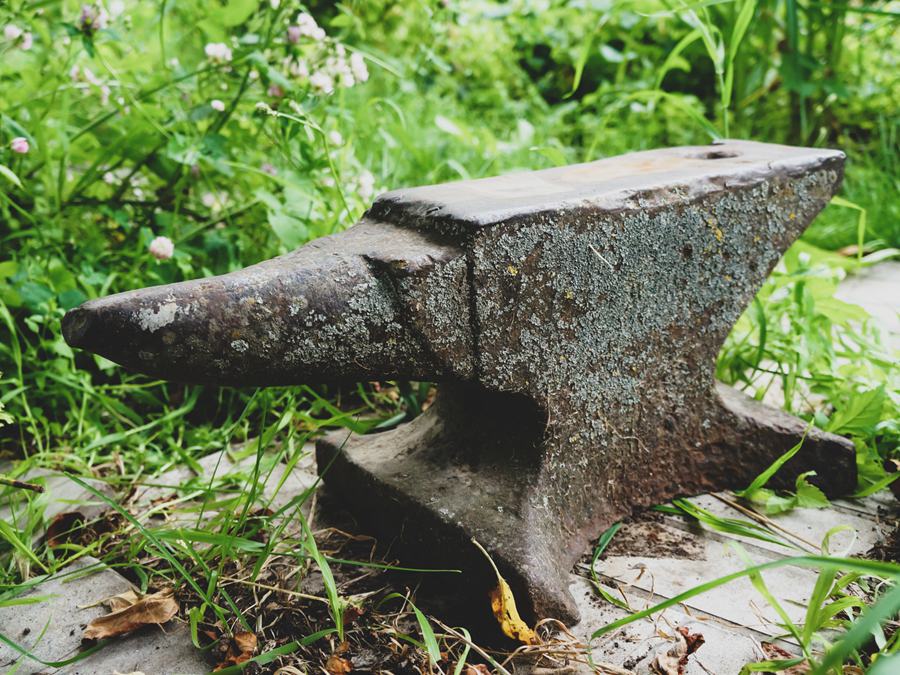Antique anvils have captured the fascination of collectors and enthusiasts alike, given their historical significance and the value they hold. As a key tool in blacksmithing throughout history, these timeless pieces can provide insight into the ways artisans crafted materials and produced goods. This guide aims to help you identify and evaluate antique anvils, focusing on factors such as their makers, markings, and potential worth.
Identifying antique anvils often relies on discerning the marks left by their makers. The first anvil maker in the United States was the Eagle Anvil Works of Trenton, New Jersey, a company that made cast iron anvils featuring a hard gun metal top. Another renowned manufacturer, Peter Wright, marked his creations with his name or abbreviated initials, leaving a visible finishing line on each character. Keep in mind that anvil markings can vary, but they often hold valuable information for those seeking to date and identify these cherished objects.
When it comes to determining an antique anvil’s value, factors such as its weight, condition, and rarity come into play. For instance, collectors often seek heavier anvils weighing between 300 to 400 pounds. Moreover, the value may increase if an anvil features rare markings or originates from a notable maker. While it may be challenging to pinpoint an exact value for an antique anvil, understanding the aforementioned factors can offer valuable guidance in appraising these intriguing pieces of history.
Table of Contents
The History of Antique Anvils
Anvils have been an essential tool for blacksmiths and metalworkers for thousands of years. According to Anvils in America by Richard A. Postman, the use of metal for making tools and weapons can be traced back to 4,000 B.C. With this long history, it is no wonder that there is a great interest in the identification and valuation of antique anvils.
In the United States, the first anvil maker was the Eagle Anvil Works of Trenton, New Jersey, founded in 1843 by its inventor Mark Fisher. This company produced its anvils out of cast iron and topped them with a thick layer of gun metal, which was advertised as being impervious to hammer blows and guaranteed not to ring when struck.
Eagle Anvil Works made a name for itself with its distinctive anvils that featured an eagle logo. Over the years, there have been five or six iterations of this logo, but a common feature among antique anvils from this manufacturer is the recognizable eagle mark. The Fisher and Norris anvils, established by Mark Fisher in New Jersey, also bear their distinct logos, which are similarly valuable to collectors.
When identifying and valuating antique anvils, there are several factors to consider:
- Date and age: Older, handmade anvils tend to be more valuable.
- Shape: Unique or rare shapes can increase an anvil’s worth.
- Material: The type of metal and the quality of the forging can affect value.
- Maker: Anvils produced by well-known or historically significant makers might be more sought after.
- Condition: Well-preserved anvils with minimal damage are often worth more.
- Maker’s mark: Visible and clear maker’s marks can also increase the value of an anvil.
To aid in identifying antique anvils, many experts use a guide such as the one found in Appendix A of Anvils in America, which provides a quick overview of major anvil groups and makes. This invaluable resource can help collectors spot valuable and historically significant pieces more easily.
Ultimately, the history of antique anvils is rich and varied, with numerous makers and innovations over the years. As collectors and enthusiasts continue to seek out these treasured pieces, the importance of accurate identification and valuation grows ever more essential.
10 Types of Antique Anvils and Their Valuation
London Pattern Anvil
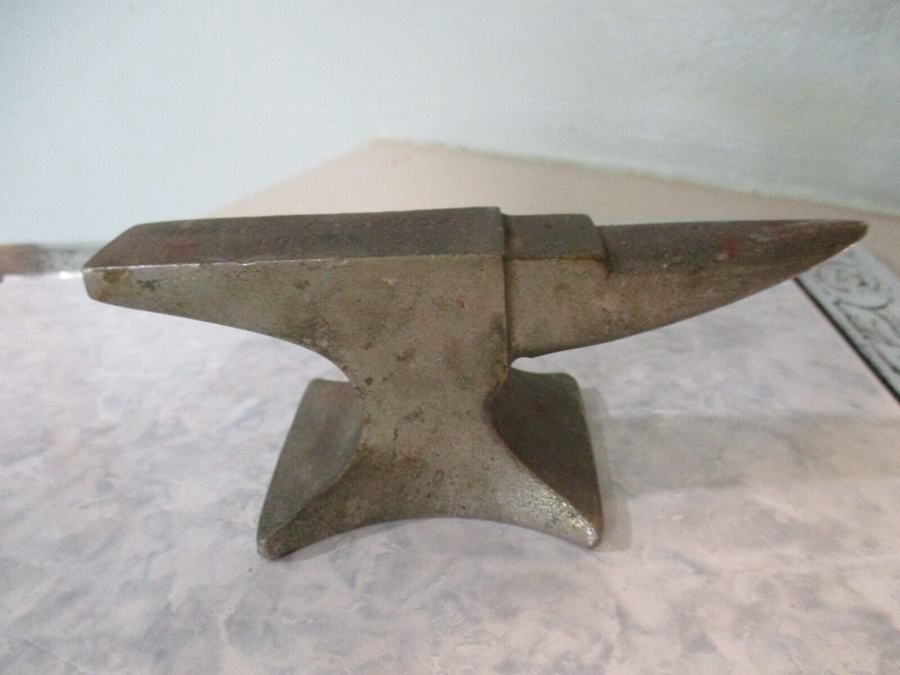
The London Pattern Anvil is one of the most common types of anvils. Originating in England, this design usually has a horn, face, and flat tail. These anvils are valued for their durability and craftsmanship, with values ranging from $300 to $1,000, depending on size.
Farrier’s Anvil

Designed for horseshoeing, Farrier’s Anvils usually have a bulbous horn, a turning cam, and a narrow waist. These anvils are an essential tool for farriers, and their values can range from $300 to $600.
Double-Horned Anvil
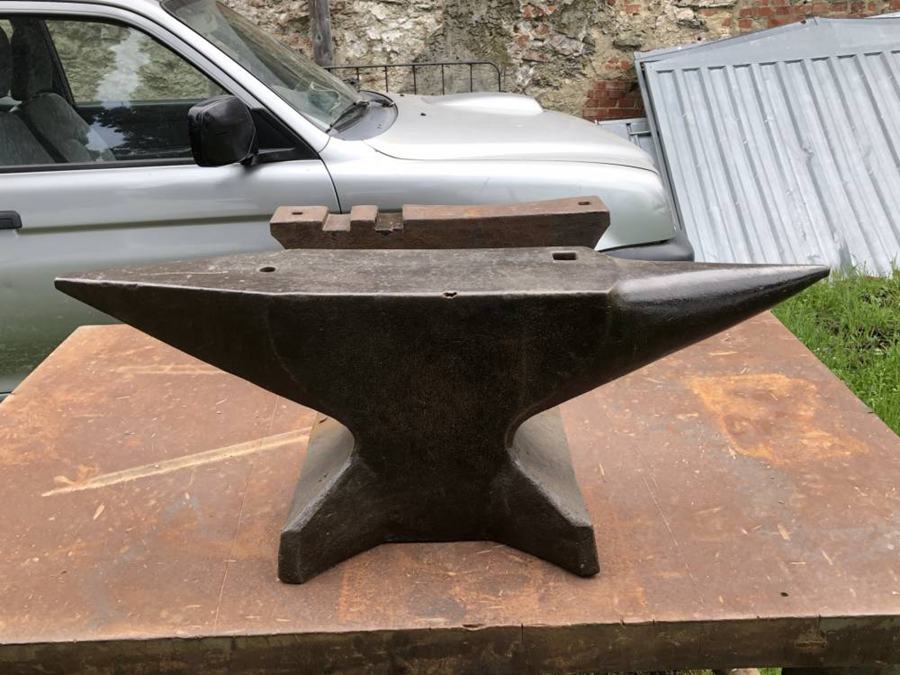
The Double-Horned Anvil has two horns, one round and one square, hence the name. These anvils are ideal for blacksmiths who require different shapes for their work. The valuation for this type of anvil can range from $500 to $800.
Church Window Anvil

Featuring arch-shaped openings in the body, Church Window Anvils are unique and rare. The openings serve as tools for bending or shaping metal. Their rarity can make them valuable, with an average valuation between $800 and $1,200.
German Pattern Anvil
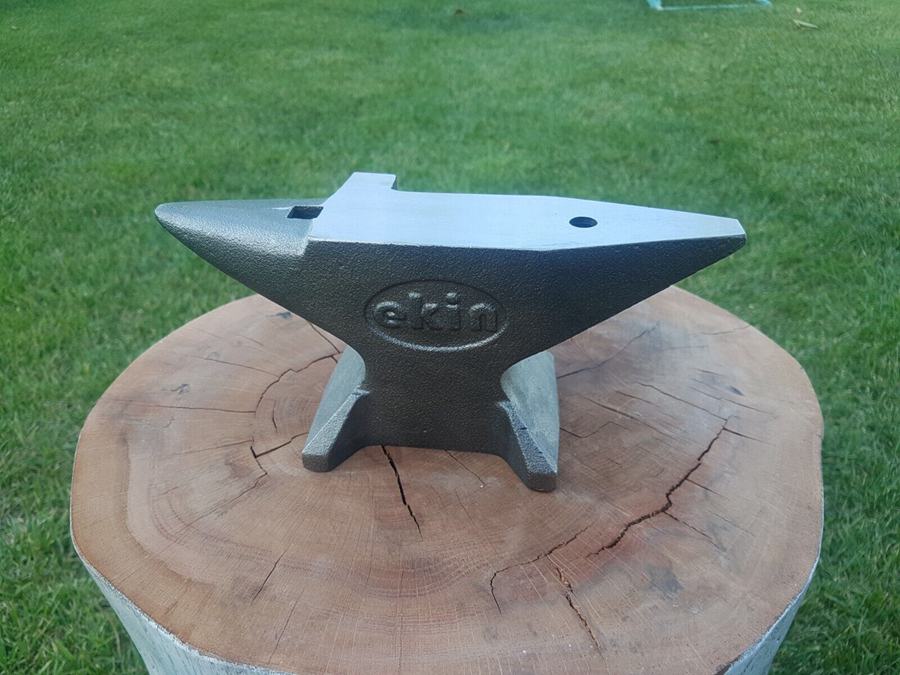
The German Pattern Anvil is similar to the London pattern, but it has a more distinct double horn and a thicker body. Known for their quality and durability, these anvils can be valued between $400 and $1,500.
American Pattern Anvil
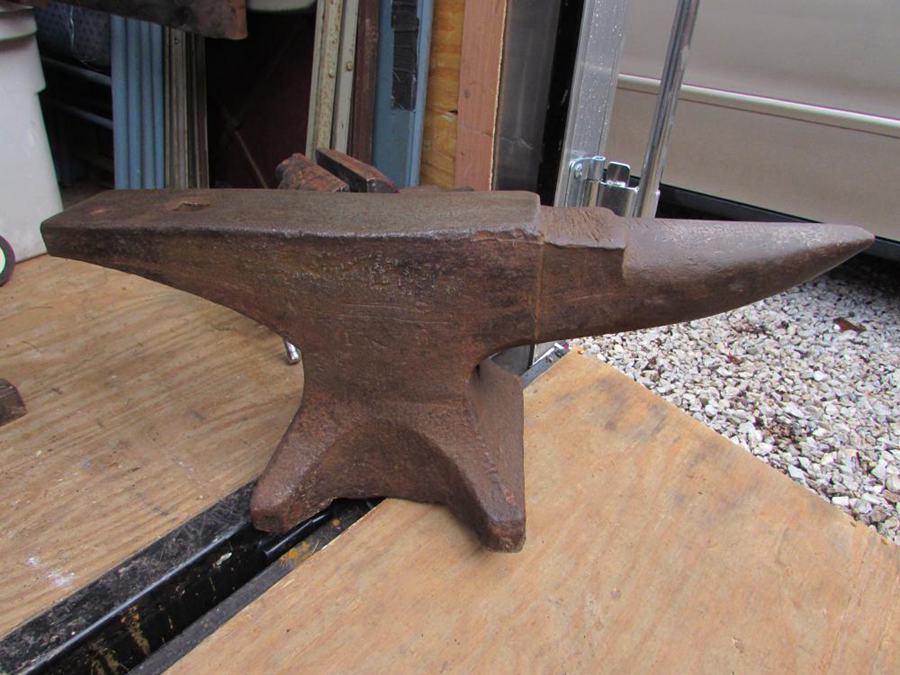
Developed in the United States by the Eagle Anvil Works of Trenton, New Jersey, American Pattern Anvils have a cast iron base topped with a gun metal layer. With prices dependent on age and condition, values can range from $300 to $900.
Stake Anvil
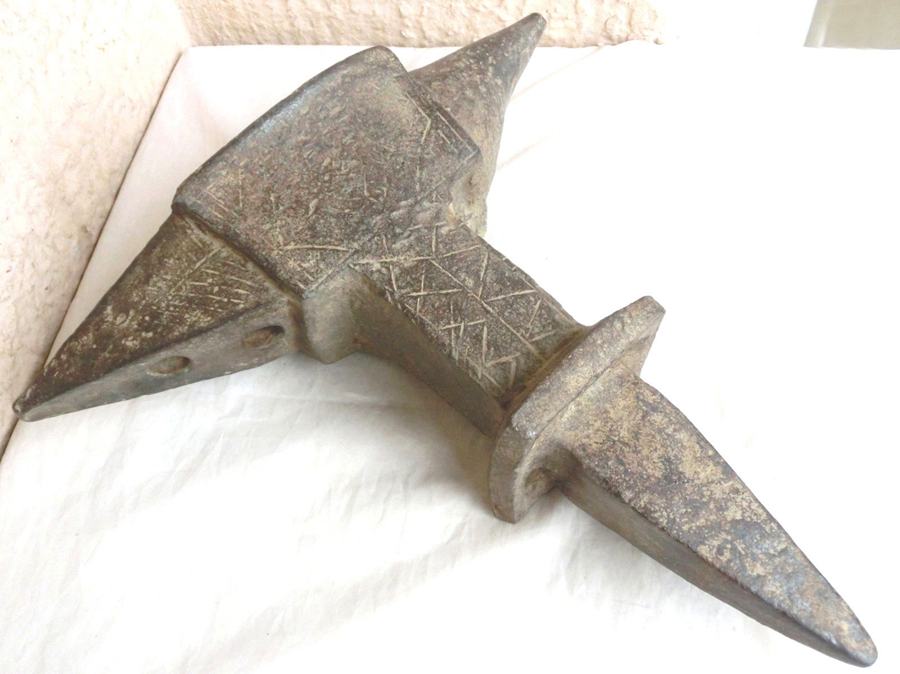
A versatile piece, the Stake Anvil is ideal for jewelers and foundry workers. These smaller-sized anvils are driven directly into a stable surface like a stump or a bench. Valuation for a Stake Anvil ranges between $200 and $500.
Railroad Anvil
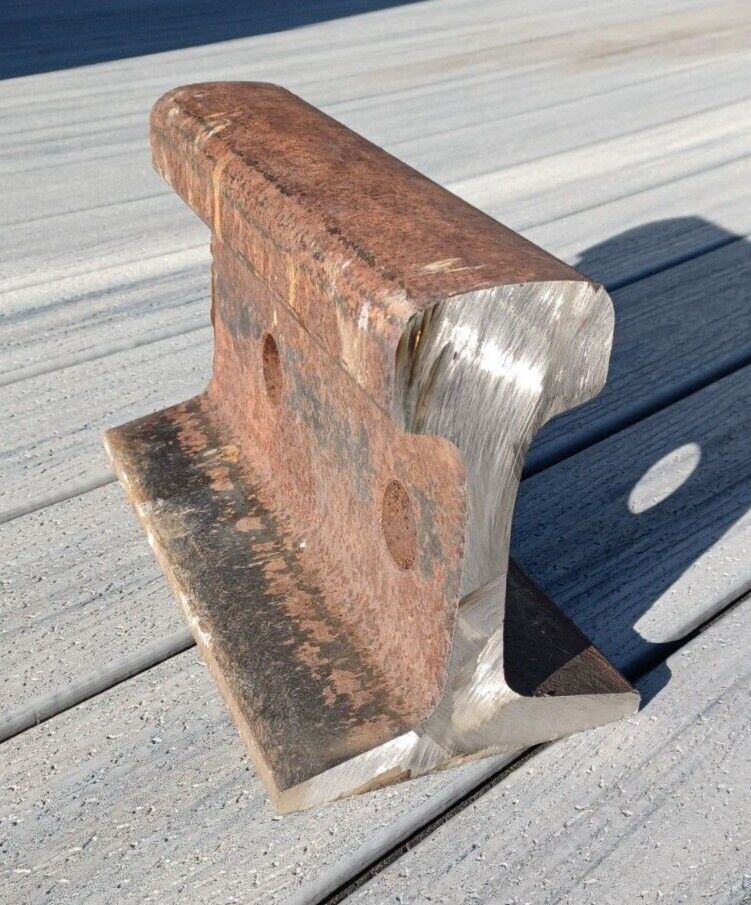
These anvils were used for maintenance and repair work on railroads. Made from sections of rail, Railroad Anvils are not as valuable as other types due to the simpler design and construction. Average values range between $100 to $300.
Hay-Budden Anvil
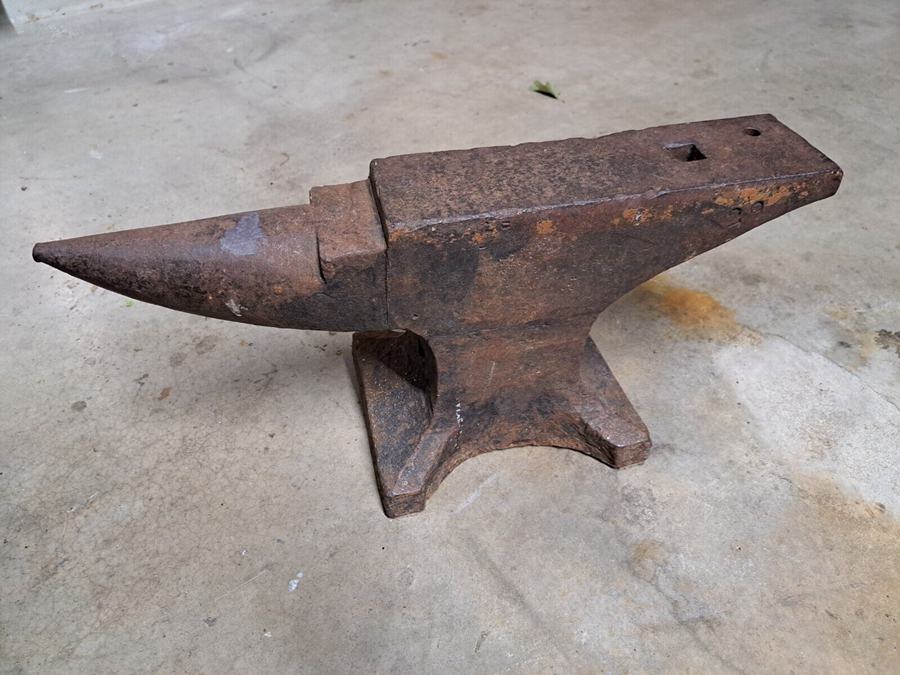
Hay-Budden Anvils are an iconic piece from the golden age of American blacksmithing. Known for their quality, these anvils can fetch between $500 and $1,000 in the collector’s market.
Colonial Anvil
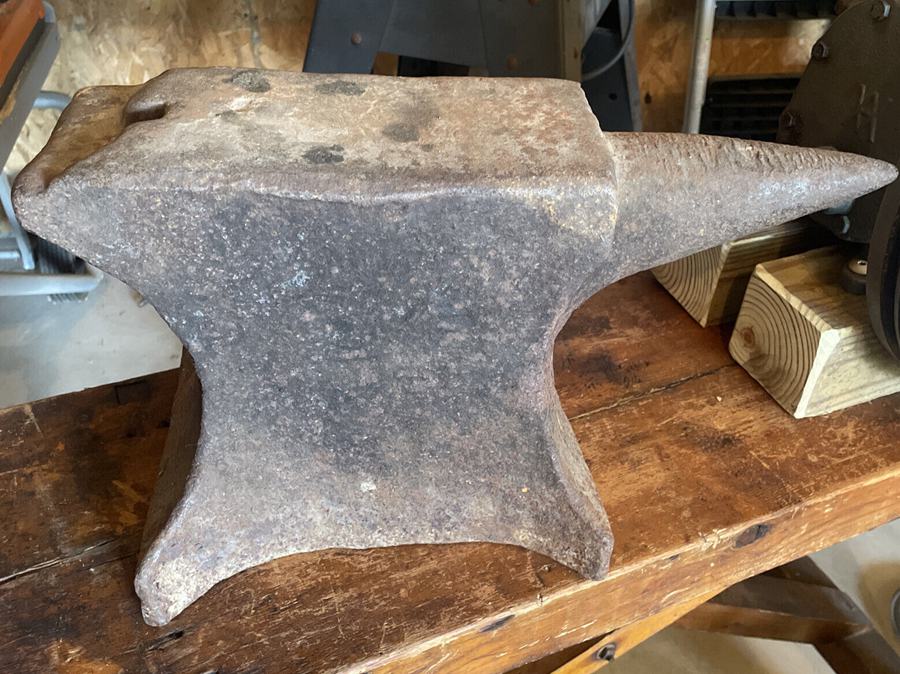
Colonial Anvils were produced in the early days of American blacksmithing. These anvils are unique in their design and history, often fetching valuations between $1,000 and $2,000, depending on their rarity and condition.
Brands and Manufacturers
Several notable antique anvil brands have left their mark on history. Identifying these brands and understanding their value is crucial for collectors and enthusiasts alike.
- Fisher and Norris: The first anvil maker in the United States, Fisher and Norris, was established in 1843 by Mark Fisher. The company made anvils using a patented process that incorporated a hard tool steel plate on a cast iron body. This gunmetal surface insured their anvils were impervious to hammer blows and didn’t ring when struck.
- Peter Wright: One of the more sought-after antique anvil brands, Peter Wright made anvils using wrought iron with a steel plate on the face. These anvils are usually marked with their weight and are highly valued by collectors.
- Trenton: Trenton anvils were made by the Eagle Anvil Works of Trenton, New Jersey. Known for their large sizes, some Trenton anvils can weigh upwards of 500 pounds. These anvils are highly regarded for their durability and hefty price tags at auction.
- Saw Makers Anvil: Saw makers anvils are unique in their design, typically having flatter tops and indents for securing saws during the manufacturing process. Collectors value these anvils for their rarity and historical significance in the tool making industry.
- Farriers Anvil: Farrier’s anvils are specifically designed for shaping horseshoes and often feature no shoulder, a larger horn, and a second pritchel hole. They are commonly found at farm sales and antique shops.
When considering the valuation of an antique anvil, keep in mind that larger anvils typically carry higher value. For example, a nearly 500-pound Trenton anvil has been listed for $8,075 at auction, while a 26-pound Peter Wright steel anvil sold for only $3,100. It is important for collectors to research individual brands and anvils to ensure they are properly identifying and valuing their finds.
Factors to Identify & Value an Antique Anvil
Age and history
The age and history of an antique anvil are key factors in determining its value. Older anvils with a documented history or connection to significant events or people tend to have a higher value.
When evaluating age and history:
- Estimate the age of the anvil based on its style and materials
- Research historical events or people associated with the anvil
- Obtain any available documentation to support the provenance
Maker’s mark
The maker’s mark on an antique anvil signifies the manufacturer and provides clues about its origin, quality, and rarity. Recognizable and reputable maker’s marks generally increase the value of the anvil.
To identify a maker’s mark:
- Examine the anvil closely for stamps or engravings
- Compare the mark to known examples from manufacturers
- Research the history of the maker and their reputation
Weight
The weight of an antique anvil is another factor that influences its value. Heavier anvils often command a higher price due to their increased durability and usage potential.
Consider the following weight categories:
| Weight Range | Value Impact |
|---|---|
| Up to 100 lbs | Lower value |
| 100-200 lbs | Moderate value |
| Over 200 lbs | Higher value |
Condition
The condition of an antique anvil plays a large role in determining its value. Anvils with minimal wear and damage are generally more valuable than those in poor condition.
Consider the following aspects when assessing condition:
- Surface wear and pitting
- Chips or cracks on edges and face
- Damage or repair to the horn or heel
Shape and features
An anvil’s shape and features, such as unique designs or additional tools, can also impact its value. Unique or rare shapes and features tend to increase an anvil’s value.
Some examples of noteworthy features:
- Unique horn or heel shapes
- Additional tools integrated into the anvil
- Ornate decorative elements
Rarity
Rarity is an important factor in the valuation of an antique anvil. Rarer anvils, especially those from sought-after makers or with limited production runs, often have a higher value.
To determine rarity:
- Compare the anvil to known examples from the same maker
- Research historical production records and quantities
- Assess the current availability of similar anvils in the market
Final Thoughts
In the world of antique anvils, proper identification is crucial for determining the value and appreciating the history behind these unique pieces. By examining factors such as the anvil’s age, shape, and type, collectors can better understand the origins and worth of their artifacts.
It is vital to remember that the value of an antique anvil can range significantly from $50 to $5,000. This depends on factors such as when the anvil was made, the material it was constructed from, and its weight. Collectors should keep these variables in mind when assessing their potential acquisitions.
When evaluating an antique anvil, consider the following:
- Age and date: Older, handmade anvils are generally more valuable due to their rarity and historical significance.
- Material: Anvils made of wrought iron or steel may have higher value than those made from other materials.
- Weight: Heavier anvils, particularly those used by blacksmiths, can fetch higher prices because of their versatility and craftsmanship.
- Unique features: Unusual or distinctive shapes, markings, and styles can increase an anvil’s value, making it more appealing to collectors.
Remember that the market for antique anvils is influenced by supply and demand and that the values of these artifacts can fluctuate over time.
In summary, being well-informed about antique anvil identification and valuation is essential for collectors to make confident and educated decisions. By scrutinizing each anvil’s distinctive features and understanding the factors that impact its valuation, collectors can uncover the fascinating history behind these artifacts while making informed investments in their collections.
FAQ
What do the markings on an antique anvil mean?
The markings on an antique anvil typically represent its weight, maker’s mark, and sometimes the year of production. It’s essential to examine these markings closely to identify the anvil’s age, origin, and potential value.
How can one tell the age of an antique anvil?
Determining the age of an antique anvil involves examining its shape, construction method, and markings. Anvils made before the 20th century generally have a more handmade appearance with unique shapes and features, while anvils made during the early 20th century and onwards reflect greater competition and standardization in design.
How to distinguish between a cast and forged anvil?
Cast anvils typically have a more uniform appearance and texture, while forged anvils may reveal hammer marks and irregularities from the blacksmithing process. Additionally, cast anvils often have a seam or parting line visible from the casting process; forged anvils will not exhibit this feature.
What kind of steel were old anvils made of?
Antique anvils were primarily made with wrought iron, sometimes topped with a hardened steel face. Some older anvils, such as those made by Eagle, featured a cast iron base topped with a layer of gun metal, which is a type of bronze.
Which antique anvil brands are highly sought after?
Some renowned antique anvil brands include Fisher and Norris, Hay-Budden, and Peter Wright. These brands are known for their quality, craftsmanship, and durability, making them desirable among collectors and blacksmiths alike.
How much can an antique anvil be worth?
The value of an antique anvil can range from $50 to $5,000 or more, depending on factors such as its age, construction material, weight, and rarity. Key aspects that influence an anvil’s value include its condition, the desirability of the brand, and markings that provide insight into its history.

